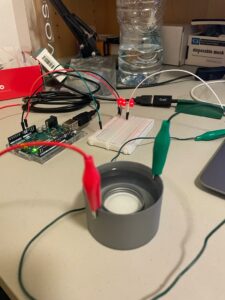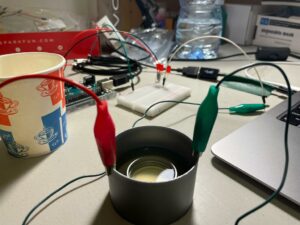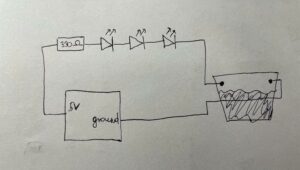Concept
For this assignment I decided to create a potentially useful and practical switch that can be utilized in real world for detecting the sea level. My switch lights up with three red LEDs indicating that the water level at sea is above a certain point. Sea Level Detector does not use a traditional sensor. Instead, it relies on the conductivity of saltwater to complete the circuit and activate the LEDs.
This project is a great way to raise awareness about rising sea levels and the impact of climate change. By using simple materials and basic electronics, it is accessible to anyone interested in building their own Sea Level Detector. The project can also be modified to include additional features, such as data logging or remote monitoring, to make it even more useful and informative.
Implementation
The Sea Level Detector uses two metal rods, which are connected to the Arduino board and placed in the saltwater. As the water level rises, it comes into contact with both rods, completing the circuit and allowing electricity to flow between them. This results in the LEDs lighting up, indicating that the water level has reached a certain point.
The conductivity of saltwater is due to the presence of ions, specifically Na+ (sodium ions) and Cl- (chloride ions). These ions allow the water to conduct electricity, which is the principle behind the Sea Level Detector.
First picture depicts a high level of water which touches the metal rods conducting electricity through water lighting up the three red LEDs. In contrast, second picture shows the low level of water where rods are not in contact with water thus not conducting the electricity and LEDs are off.
Schematic Diagram
Video Demo




